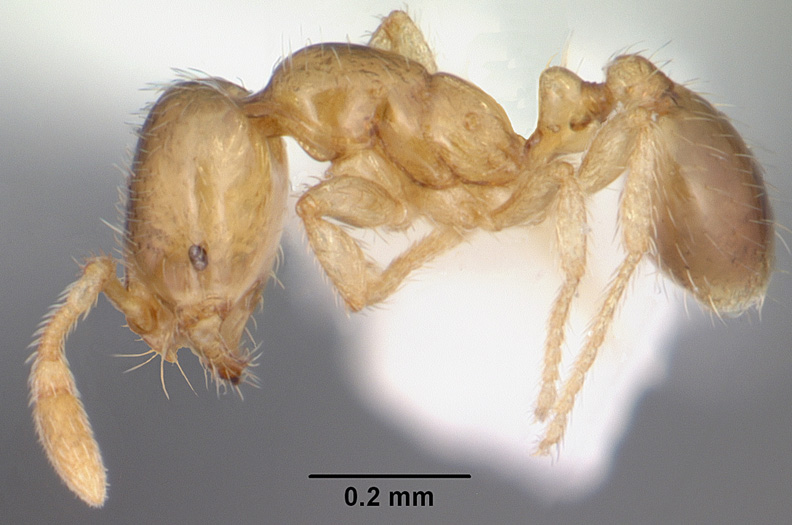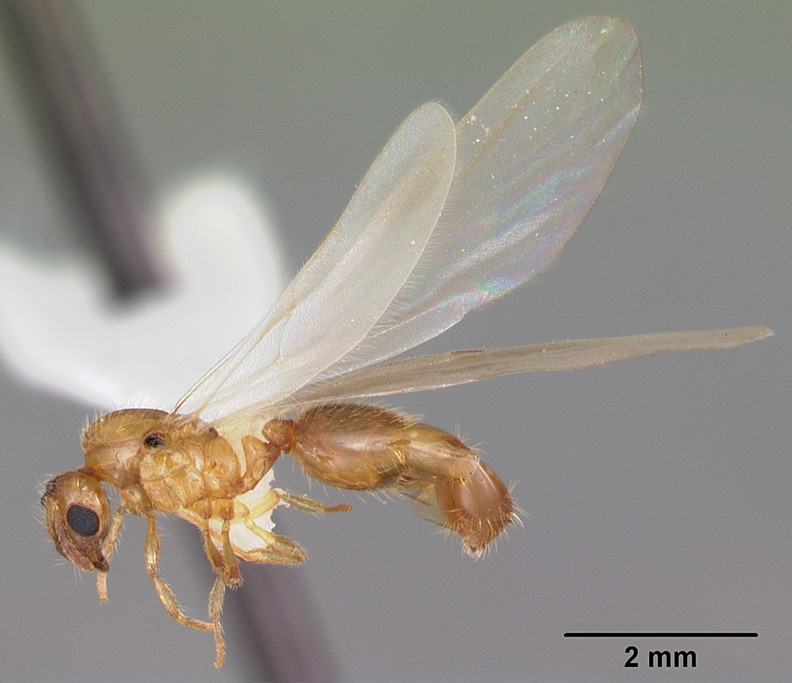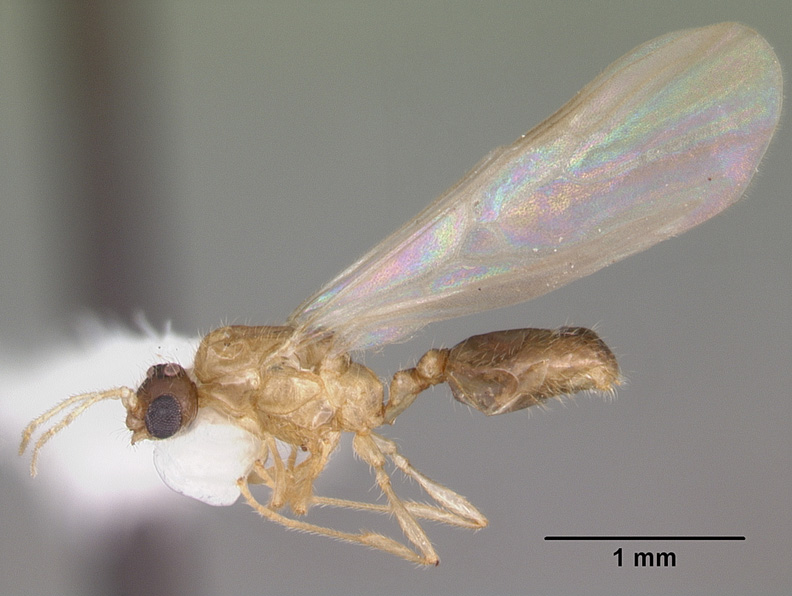Subfamily MYRMICINAE |
|
Solenopsis carolinensis, full face view of a worker (click image to enlarge). Photo courtesy of http://www.antweb.org/ |
Solenopsis carolinensis, side view of a worker (click image to enlarge). Photo courtesy of http://www.antweb.org/ |
Solenopsis carolinensis, side view of a queen (click image to enlarge). Photo courtesy of http://www.antweb.org/ |
Solenopsis carolinensis, side view of a male (click image to enlarge). Photo courtesy of http://www.antweb.org/ |
Introduction Solenopsis carolinensis is a common species of thief ant in the Southeast, but due to its similarity to several other species and various taxonomic problems with the group in general, it is very difficult to differentiate it from other thief ant species in the region. Historically, most species of thief ants were all identified as S. molesta. However, as indicated by Thompson (1989), specimens identified as S. molesta in collections and in the literature actually represented several species. For accurate identifications, females and males may be needed, as well as an understanding of nesting habitats. DNA analysis may also help resolve questions. Identification Hybridization is not uncommon among related species in the fire ant group, which can make identification of some species difficult. Identification of thief ants is perhaps even more challenging due to their minute size, similar appearance of workers of one species to another, various taxonomic problems, and lack of complete knowledge of all castes. Worker: Minute: 1.32-1.48 mm TL (measurements from Pacheco 2007). Concolorous yellow. Head longer than wide, subquadrate. Lateral clypeal teeth angulate; extralateral teeth absent. Length of segments 3-8 of the funiculus shorter or about equal to the distance between the frontal carinae (length less than 0.1 mm, rarely longer). Eyes small with 3-5 facets. Alitrunk smooth and shiny. Metapleuron with weak horizontal striae. Petiolar node subtriangular and rounded, with a ventral tooth. Postpetiolar node globose, lacking tooth. Pilosity is abundan on entire body; hairs on posterior tibia semierect. Female: Medium sized (4.08-4.20 mm TL). Concolorous yellow. Head longer than wide, subquadrate. Lateral clypeal teeth angulate; extralateral teeth absent. Eye black, large (about 0.25 mm in diameter). Ocellae dark; medial ocellus large. Pronotum with coarse punctation, but smooth and shiny between punctures. Mesopleuron lacking sculpture. Lower metapleuron with distinct horizontal striae. Petiole wider than postpetiole, and with distinct ventral flange. Male: Size: 2.88-3.00 mm TL. Bicolored with brownish head and gaster, yellowish brown alitrunk, petiole, and postpetiole, and yellow to yellowish brown antennae and legs. Head wider than long, shiny and smooth. Eye black and large (approximately 2.40 mm in diameter). Clypeus convex and lacking teeth or other protuberances. Frontal lobes widely separated. Alitrunk shiny and smooth. Petiole wider than postpetiole (in lateral view) and with small ventral flange. Postpetiole wider than petiole in dorsal view and lacking ventral tooth or flange. Pilosity abundant over entire body and appendages. Workers of this species are remarkably difficult to differentiate from S. texana, S. molesta, S. abdita, and several other species of thief ants. Solenopsis carolinensis differs from S. molesta by its minor funicular segments being shorter (length of segments 3-8 of the funiculus shorter or about equal to the distance between the frontal carinae - less than 0.1 mm; whereas, in S. molesta the minor funicular segments are are usually greater than 1.2 mm. The females of these species differ with S. carolinensis queens being smaller (4.1-4.3 mm TL) and S. molesta queens being larger (4.7-54 mm TL). Males of S. carolinensis are bicolored and males of S. molesta are dark brown to blackish with pale appendages. Solenopsis carolinensis is most easily separated from S. texana and S. abdita by the queens: S. carolinensis queens are yellow and have large eyes (0.25 mm in diameter); S. texana queens are yellowish brown to medium brown and have small eyes (0.16 mm in diameter); and S. abdita queens are dark brown to blackish with small eyes (1.7-18 mm in diameter). Workers of S. carolinensis differ by having erect to semierect hairs on the posterior femur (appressed in S. texana), and they differ from workers of S. abdita by having erect hairs on the scapes (appressed in S. abdita). Biology and Economic Importance Distribution Literature Cited Thompson, C. R. 1989. The thief ants, Solenopsis molesta group, of Florida (Hymenoptera: Formicidae). Florida Entomologist 72(2): 268-283. Links |
|






